
Sign languages are languages that use the visual-manual modality to convey meaning, instead of spoken words. Sign languages are expressed through manual articulation in combination with non-manual markers. Sign languages are full-fledged natural languages with their own grammar and lexicon. Sign languages are not universal and are usually not mutually intelligible, although there are also similarities among different sign languages.
Auslan is the sign language used by the majority of the Australian Deaf community. The term Auslan is a portmanteau of "Australian Sign Language", coined by Trevor Johnston in the 1980s, although the language itself is much older. Auslan is related to British Sign Language (BSL) and New Zealand Sign Language (NZSL); the three have descended from the same parent language, and together comprise the BANZSL language family. Auslan has also been influenced by Irish Sign Language (ISL) and more recently has borrowed signs from American Sign Language (ASL).
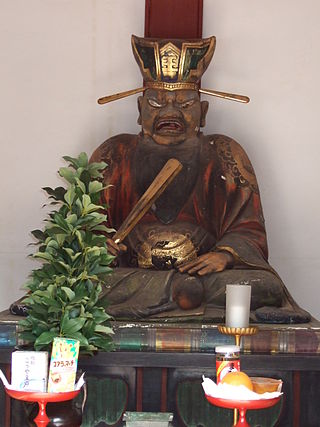
Shinigami are kami that invite humans toward death in certain aspects of Japanese religion and culture. Shinigami have been described as monsters, helpers, and creatures of darkness. Shinigami are used for tales and religions in Japanese culture.
Manually Coded English (MCE) is an umbrella term referring to a number of invented manual codes intended to visually represent the exact grammar and morphology of spoken English. Different codes of MCE vary in the levels of adherence to spoken English grammar, morphology, and syntax. MCE is typically used in conjunction with direct spoken English.
Japanese Sign Language, also known by the acronym JSL, is the dominant sign language in Japan and is a complete natural language, distinct from but influenced by the spoken Japanese language.
Manually coded languages (MCLs) are a family of gestural communication methods which include gestural spelling as well as constructed languages which directly interpolate the grammar and syntax of oral languages in a gestural-visual form—that is, signed versions of oral languages. Unlike the sign languages that have evolved naturally in deaf communities, these manual codes are the conscious invention of deaf and hearing educators, and as such lack the distinct spatial structures present in native deaf sign languages. MCLs mostly follow the grammar of the oral language—or, more precisely, of the written form of the oral language that they interpolate. They have been mainly used in deaf education in an effort to "represent English on the hands" and by sign language interpreters in K-12 schools, although they have had some influence on deaf sign languages where their implementation was widespread.

Kozo Uno was a Japanese economist and is considered one of the most important theorists on the field of Marx's theory of value.
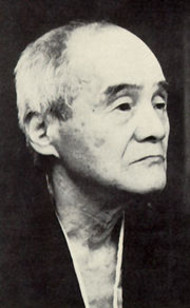
Hajime Tanabe was a Japanese philosopher of science, particularly of mathematics and physics. His work brought together elements of Buddhism, scientific thought, Western philosophy, Christianity, and Marxism. In the postwar years, Tanabe coined the concept of metanoetics, proposing that the limits of speculative philosophy and reason must be surpassed by metanoia.

Tatsuo Nishida was a professor at Kyoto University. His work encompasses research on a variety of Tibeto-Burman languages, he made great contributions in particular to the deciphering of the Tangut language.
The Japanese Sign Language (JSL) family is a language family of three sign languages:
Tokushi Kasahara is a Japanese historian. He is a professor emeritus at Tsuru University and his area of expertise is modern Chinese history.
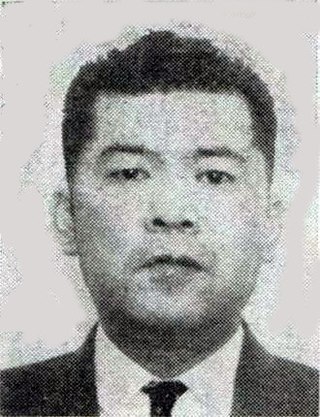
Isamu Togawa was a Japanese writer and political commentator. Togawa was born in the city of Hiratsuka in Kanagawa Prefecture. His father was the novelist and former mayor of Hiratsuka Sadao Togawa and his younger brother was the novelist Itaru Kikumura.
Bernard Ryosuke Inagaki was a Japanese philosopher and Thomas Aquinas scholar. He wrote extensively on medieval philosophy, scholastic philosophy, and philosophy of law. He is known for leading the Japanese translation of Aquinas' Summa Theologiæ.
Takafusa Nakamura was a Japanese economist.
Miyakubo Sign Language also known as Ehime-Oshima Sign Language, is a village sign language of Ōshima Island in the western Inland Sea of Japan. In the town of Miyakubo on the island, there exist a high incidence of congenital deafness. Three families are predominantly deaf, with 20 living deaf members, and in one of them all family members are deaf and have been for at least three generations. These form the core of speakers of the language, though there are deaf members of other families who speak it as well. There are also about 50 hearing neighbors and coworkers of the deaf who know the language. A number of hearing children pick it up from deaf classmates in preschool. Because Signed Japanese rather than Japanese Sign Language (JSL) long dominated in education for the deaf in Japan, Miyakubo Sign was protected from the influence of JSL until the early 2000s. The opening of the Nishiseto Expressway in 1999 also opened the community to greater external influence and decreased the level of interaction between the deaf and hearing. Currently the younger generations are bilingual, but use Miyakubo Sign exclusively with older people, who find JSL unintelligible. Among themselves, they may mix Miyakubo Sign and JSL or use JSL exclusively.
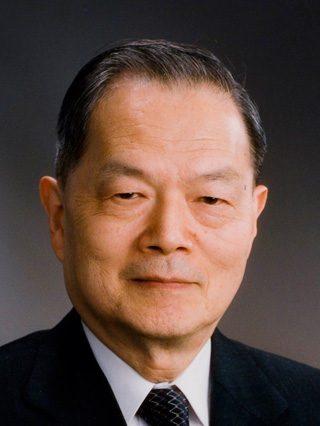
Akira Hayami was an emeritus professor of Keio University and the first to introduce historical demography in Japan. Professor Hayami is also famous for coining the concept called "Industrious Revolution",which points out the socio-economic change from capital-intensive to labor-intensive one.

The Shizuoka dialect is a Japanese dialect spoken in Shizuoka Prefecture. In a narrow sense, this can refer purely to the Central Shizuoka dialect, whilst a broader definition encompasses all Shizuoka dialects. This article will focus on all dialects found in the prefecture.

The Okuyoshino dialect is a Kansai dialect of Japanese spoken in several villages in the Okuyoshino region of southern Nara Prefecture. It is well-known as a language island, with various rare and unique characteristics.
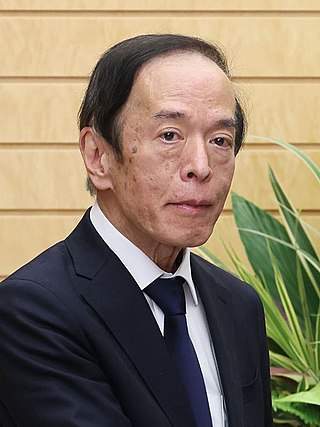
Kazuo Ueda is a Japanese economist who has been serving as the 32nd Governor of the Bank of Japan (BOJ) since April 2023.









